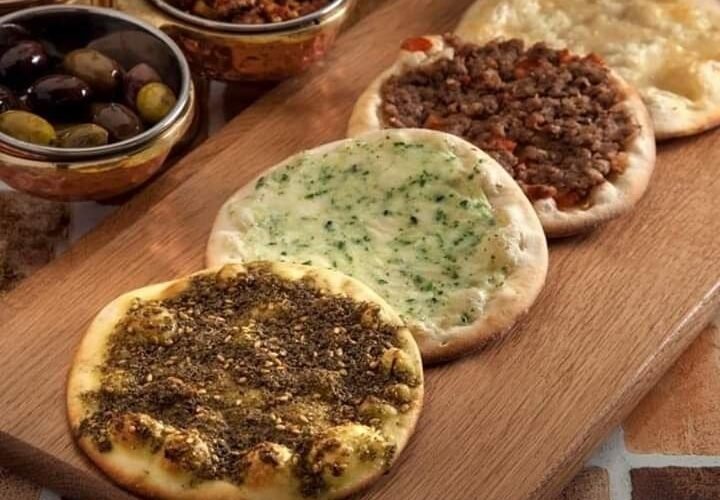Review of Lebanese and Middle Eastern Eateries

Lebanese and Middle Eastern eateries bring an irresistible blend of flavor, warmth, and hospitality to the table. These restaurants do more than serve food — they tell stories of ancient spice routes, family traditions, and centuries-old recipes that still shine in modern kitchens. The Middle Eastern dining scene has exploded in popularity over the past decade. Cities from Mumbai to London, Dubai to New York, now feature Lebanese and Middle Eastern restaurants that compete fiercely to deliver authentic taste and ambiance.
I explored several Lebanese and Middle Eastern eateries to understand how they capture the essence of this cuisine. My review focuses on four aspects: authenticity of flavors, presentation, ambiance, service quality, and overall dining experience.
1. The Allure of Middle Eastern Cuisine
Middle Eastern food celebrates freshness, spice balance, and community-style dining. Every dish carries history — from Lebanese tabbouleh to Persian kebabs and Turkish baklava. Diners often share plates, which creates a communal experience that defines the culture.
Lebanese cuisine stands at the heart of this region’s culinary identity. It uses olive oil, lemon, garlic, and herbs in abundance. The flavors feel light yet satisfying. Mezze — a collection of small plates — dominates every Lebanese menu. You find hummus, baba ghanoush, fattoush, and moutabal arranged beautifully, ready for dipping and sharing.
Restaurants that master these elements win hearts quickly. However, not every place does justice to the subtlety of Middle Eastern cooking. Some overuse spices or serve dishes drenched in oil. Authenticity depends on restraint and respect for ingredients.
2. Exploring Authentic Lebanese Eateries
When I visited Zaitoon House, a Lebanese restaurant known for its rustic charm, I felt transported to Beirut. The moment I entered, the aroma of freshly baked pita and grilled meat filled the air. The restaurant played traditional Oud music softly in the background, setting a relaxed, cultural tone.
I started with mezze platters — creamy hummus, smoky baba ghanoush, and tabbouleh bursting with parsley freshness. Each bite balanced acidity and spice perfectly. The chef explained that they imported sumac and za’atar directly from Lebanon, and the difference showed. The hummus tasted velvety without feeling heavy, and the baba ghanoush carried an authentic char from roasted eggplants.
For mains, I chose Shish Taouk — skewered chicken marinated in garlic, lemon, and yogurt. The meat felt juicy, not dry, and the flavors exploded with every bite. They paired it with saffron rice and pickled turnips, which added brightness. The lamb kofta also impressed me. The chef grilled it just enough to preserve tenderness while maintaining that signature smoky edge.
The dessert course at Zaitoon House proved equally memorable. Their Baklava combined layers of crisp phyllo, pistachios, and honey syrup that hit the perfect sweetness. Many places serve baklava dripping with sugar, but this one maintained balance.
Zaitoon House earned top marks for authenticity, presentation, and service. The staff engaged warmly, explained dishes confidently, and created a sense of Lebanese hospitality that few modern restaurants replicate.
3. Modern Middle Eastern Fusion Concepts
Not all Middle Eastern eateries stay traditional. Many young chefs reinterpret Lebanese and regional dishes with creative twists. I visited Mezza & Co, a contemporary restaurant that reimagines old favorites.
The interior displayed sleek lines, open kitchens, and minimalist décor inspired by modern Dubai cafés. The menu offered avocado hummus, beetroot mutabal, and shawarma tacos — clearly fusion ideas. Normally, I approach such menus with caution because fusion can sometimes dilute authenticity. But Mezza & Co balanced innovation and respect for roots quite well.
The avocado hummus turned out smooth, fresh, and light, with garlic lending punch without overpowering the avocado. Their beetroot mutabal combined smoky undertones of grilled eggplant with earthy beet sweetness. The plating looked stunning — bright magenta hues on matte ceramic dishes.
For the main course, I tried the Lamb Shawarma Bowl, which featured slow-roasted lamb shreds over bulgur wheat, topped with pickled onions and tahini drizzle. The lamb tasted rich yet not fatty, and the tahini added nutty depth. This dish showcased how modern Middle Eastern restaurants adapt traditional recipes for health-conscious urban diners.
Mezza & Co also introduced mocktails infused with Middle Eastern ingredients. The pomegranate-mint cooler and rose-lemon spritzer matched perfectly with the food’s spice and acidity.
Overall, Mezza & Co succeeded in modernizing Lebanese and Middle Eastern flavors without erasing their cultural identity. The presentation felt Instagram-ready, yet the heart of the cuisine stayed intact.
4. The Street Food Perspective
Lebanese and Middle Eastern street food deserves its own applause. I visited Habibi Street Kitchen, a casual eatery modeled after Beirut’s vibrant food stalls. Here, flavors hit with raw authenticity and street-style energy.
I began with falafel wraps — crispy chickpea fritters wrapped in warm pita with tahini, pickles, and lettuce. Each bite combined crunch, tang, and creamy sauce in harmony. Their shawarma rolls delivered the perfect balance of spice and juiciness. The chef sliced lamb directly from a vertical rotisserie, and the aroma turned every head in the restaurant.
The fattoush salad added freshness — crisp lettuce, cucumbers, and fried pita tossed in tangy sumac dressing. This dish perfectly complemented the heavier wraps.
Habibi Street Kitchen kept prices moderate and portions generous. The service felt brisk and friendly. The interior displayed bright murals of Lebanese souks, giving a casual, colorful vibe. You could eat here every week without burning a hole in your wallet.
For dessert, their kunafa stood out. The cheese melted beautifully under golden, shredded pastry soaked in light sugar syrup. The chef served it hot, and each bite offered creamy texture and delicate sweetness.
Street-style eateries like Habibi remind diners that Lebanese food thrives on simplicity and heart. The flavors feel bold, the food comforting, and the experience deeply personal.
5. The Fine-Dining Middle Eastern Experience
At the other end of the spectrum, fine-dining Lebanese and Middle Eastern restaurants elevate the cuisine with luxury presentation and premium ingredients. Al Sultan Dining Room exemplified this approach.
The ambiance exuded sophistication — marble tables, gold cutlery, soft lighting, and Arabic calligraphy accents. The staff greeted guests with Arabic coffee and dates, symbolizing traditional hospitality.
The menu read like a poetry collection of classics — hummus bil lahme (hummus topped with minced lamb), grilled halloumi, kibbeh, and lamb ouzi.
The hummus bil lahme tasted divine — silky hummus topped with spiced lamb and pine nuts. The textures danced between creamy and crunchy. Their kibbeh nayeh, a raw lamb tartare seasoned with bulgur and spices, showcased bold authenticity and chef precision. Only skilled chefs handle raw meat dishes safely and deliciously.
For mains, I chose Lamb Ouzi, a slow-cooked lamb leg over spiced rice with almonds and raisins. The meat fell off the bone effortlessly, while the rice absorbed aromatic flavors from cinnamon and cardamom. The dish reflected celebration and tradition, often served at weddings or family feasts in the Middle East.
Dessert reached a new level with Maamoul Ice Cream Sandwich — shortbread cookies filled with date ice cream and pistachio crumbs. This modern interpretation preserved nostalgia while adding finesse.
Al Sultan Dining Room delivered excellence from start to finish — from attentive staff to artistic plating. The prices leaned high, but every element justified the expense.
6. Evaluating Key Aspects Across Eateries
Flavor Authenticity
Authentic Lebanese and Middle Eastern eateries prioritize balance. They respect olive oil, herbs, lemon, and spice harmony. Restaurants like Zaitoon House and Al Sultan nailed this. Fusion restaurants often experiment successfully but sometimes lose subtlety.
Presentation
Modern restaurants such as Mezza & Co redefined plating aesthetics. They used colorful ceramics and minimal garnishes. Street places focused on freshness and visual appeal through abundance rather than elegance.
Ambiance
Lebanese and Middle Eastern restaurants tend to create warm, inviting spaces. Some adopt rustic designs with Arabic lanterns and wooden décor, while modern ones use sleek lines and open kitchens. Music — especially Oud or Arabic jazz — adds atmosphere.
Service
Staff behavior matters deeply in Middle Eastern dining. Hospitality carries cultural importance. Eateries that train servers to describe dishes, offer recommendations, and engage genuinely earn loyalty quickly.
Value for Money
Street kitchens offer unbeatable affordability, while fine-dining venues charge premium prices. However, both provide satisfaction when flavors justify the cost.
7. Common Challenges for Middle Eastern Eateries
Lebanese and Middle Eastern restaurants face specific challenges while expanding globally. Ingredient authenticity becomes difficult when local substitutes alter flavor profiles. For instance, local olive oil may not match Levantine ones in taste. Spices such as sumac or Aleppo pepper also lose intensity when stored improperly.
Another issue lies in balancing tradition with market trends. Health-conscious diners often avoid oil-rich or carb-heavy dishes, so chefs must innovate without compromising soul. Restaurants that handle this challenge smartly — by grilling instead of frying or reducing sugar in desserts — win modern customers while keeping authenticity alive.
Consistency also defines success. Many small eateries start strong but lose quality as they scale. Maintaining the original taste across branches demands training, supervision, and ingredient control.
8. The Global Popularity Wave
Lebanese and Middle Eastern eateries gained global momentum for several reasons. Diners increasingly prefer lighter, fresher meals that balance protein and vegetables. Hummus, falafel, and tabbouleh align perfectly with this shift.
Celebrity chefs and food influencers accelerated the trend. Television shows, Instagram food blogs, and travel vlogs showcased mezze spreads and shawarma platters as symbols of healthy indulgence. Cities such as Dubai, Doha, and Istanbul set benchmarks for presentation and luxury.
Even fast-food chains introduced Middle Eastern-inspired wraps and bowls, widening exposure. People who once hesitated to try hummus now consider it a weekly staple.
The diaspora community also played a major role. Lebanese immigrants opened family-run restaurants in Europe, India, and North America. Their commitment to preserving flavors built trust among locals and tourists alike.
9. Future of Lebanese and Middle Eastern Dining
The future looks bright for Middle Eastern cuisine. Diners crave experiences that blend authenticity with modernity. Restaurants will continue experimenting with vegan adaptations, gluten-free breads, and plant-based proteins.
Sustainability will dominate future strategies. Many Lebanese eateries already focus on zero-waste kitchens and farm-to-table sourcing. Chefs now use local produce creatively while maintaining Middle Eastern spice structures.
Technology also enters the scene. Cloud kitchens and delivery-only Lebanese brands thrive on online platforms. These businesses make authentic food accessible without high overhead costs.
Another promising direction involves cultural storytelling. Diners no longer seek just good food; they crave connection. Restaurants that highlight family recipes, origin stories, and community pride will thrive.
10. Conclusion: The Heartbeat of Hospitality
Reviewing Lebanese and Middle Eastern eateries feels like traveling through culture, not just cuisine. Each restaurant I visited carried a different rhythm — from street stalls bursting with energy to elegant dining rooms whispering refinement. Yet all shared one constant: genuine hospitality.
Lebanese and Middle Eastern cooking reflects generosity. Every table overflows with food meant to be shared. Every meal turns into a conversation. Restaurants that understand this spirit succeed, regardless of price or location.
From smoky baba ghanoush to honey-kissed baklava, every bite reveals a story — a story of migration, memory, and mastery. The best Lebanese and Middle Eastern eateries celebrate not only flavors but also the human connection that food creates.
As diners, we should support restaurants that preserve authenticity while embracing evolution. When chefs cook with honesty, serve with pride, and welcome with warmth, they uphold a centuries-old legacy of nourishment — both for the body and the soul.
Also Read – Food Quality Tarnished: Are Big Names Any Better Than Street Food?













